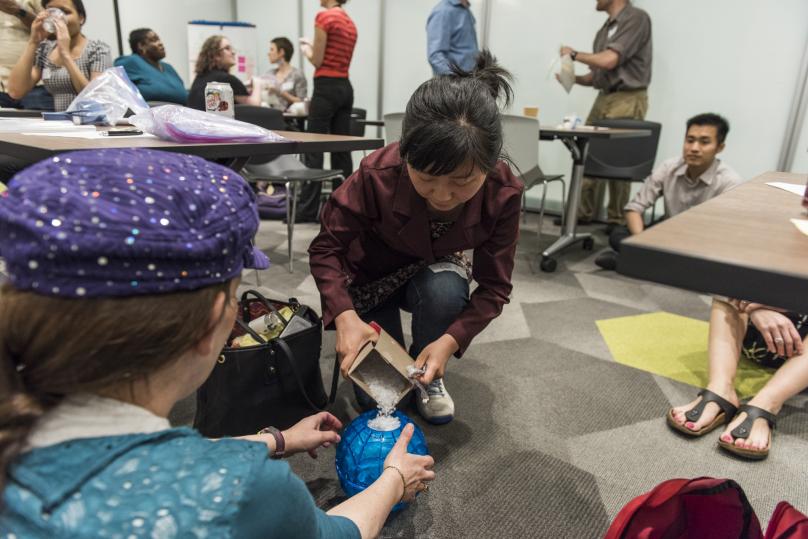
Having students participate in active learning is a key focus for teachers, but sometimes, teachers can feel “stuck” in sequential, unit by unit teaching of science curriculum, leading to disengaged students. How can teachers revamp curricula to encourage students to actively participate in learning science and think deeply about the real-life applications behind science concepts?
That’s where food comes in.
Facilitated by MƒA Master Teacher Rachel Jun and Laryssa Kramarchuk, the MƒA mini-course “Kitchen Science: Nonsequential Science Curriculum Design,” focused on how to incorporate students’ interest in food with numerous science concepts. “We wanted to find different ways to engage students, and through nonsequential curriculum, students can investigate what they are curious about instead of through traditional rote learning,” Rachel said. “It gives students more choice, allowing them to better understand content.”
The mini-course not only saw teachers exploring how to incorporate food into science lessons, but also highlighted ways for teachers to support scientific topics from across the entire curriculum. From rolling around a ball to make ice cream to crafting their own ginger beer, these food-focused projects were infused with different pieces of content from various science units, pulling topics together that reinforce each other, while getting the teachers thinking about the breadth of the NGSS standards. “I think it’s so important to share new ideas with other teachers so that we can all teach and engage our students the best we can,” said Rachel.
MƒA courses are conceptualized by teachers within the MƒA community who submit proposals on topics of interest. We turn those ideas into our full course catalog of offerings – nearly 200 per semester – for teachers, by teachers.
